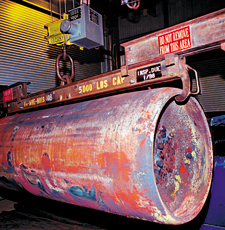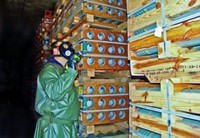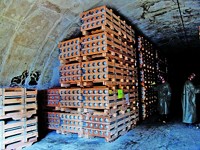Advertisement
Grab your lab coat. Let's get started
Welcome!
Welcome!
Create an account below to get 6 C&EN articles per month, receive newsletters and more - all free.
It seems this is your first time logging in online. Please enter the following information to continue.
As an ACS member you automatically get access to this site. All we need is few more details to create your reading experience.
Not you? Sign in with a different account.
Not you? Sign in with a different account.
ERROR 1
ERROR 1
ERROR 2
ERROR 2
ERROR 2
ERROR 2
ERROR 2
Password and Confirm password must match.
If you have an ACS member number, please enter it here so we can link this account to your membership. (optional)
ERROR 2
ACS values your privacy. By submitting your information, you are gaining access to C&EN and subscribing to our weekly newsletter. We use the information you provide to make your reading experience better, and we will never sell your data to third party members.
Environment
Chemical Arms Disposal
Watchdog group offers ways to make U.S. program safer
by Lois Ember
May 7, 2007
| A version of this story appeared in
Volume 85, Issue 19

On April 29, the 10th anniversary of the Chemical Weapons Convention, the Chemical Weapons Working Group weighed in with a review of the U.S. program to destroy its chemical arsenal and offered recommendations to bring the nation "closer to compliance with the treaty." CWWG, a watchdog coalition of citizens living near U.S. stockpile sites, opposes incineration as a weapons disposal method.
Among new problems that CWWG highlights is the conundrum the Army faces in disposing of mustard agent containing high levels of mercury. "The Army is not able to process" the agent using incineration because high levels of mercury would be released to the environment, CWWG says.
Just how much mustard agent in the arsenal is contaminated with mercury is not yet known. Greg Mahall, Army spokesman, says the Army is "characterizing the extent of the potential problem at this time and does not have a complete picture nor a decided path forward."
CWWG says the path forward should be "neutralization of all mustard agent munitions" at disposal sites "in Alabama, Arkansas, Oregon, and Utah." CWWG also suggests that the resulting hydrolysate from neutralization of mustard and nerve agents be treated on-site using biotreatment or supercritical water oxidation.
Vanessa Pierce, spokeswoman for the Healthy Environment Alliance of Utah, a CWWG coalition member, says the Army is considering building some type of "hybrid neutralization" into its incinerator at Tooele, Utah. She argues that if the Army takes this "one step to neutralization, it should go all the way" and destroy the mustard agent on-site using neutralization followed by a secondary treatment other than incineration.
But even at Tooele, Mahall says, "it is estimated" that incineration of mustard agent containing "elevated levels" of the metal "would emit approximately 30 lb of mercury over the life of the project." He contrasts this to "something like 35,000 lb of mercury a year" released by nearby Kennecott Utah Copper.
Among CWWG's other recommendations is full funding of the Army's disposal program, especially in Colorado and Kentucky. At these sites, design changes and budget cuts have stretched the destruction timetable to 2023, 11 years beyond the treaty's 2012 deadline.




Join the conversation
Contact the reporter
Submit a Letter to the Editor for publication
Engage with us on Twitter